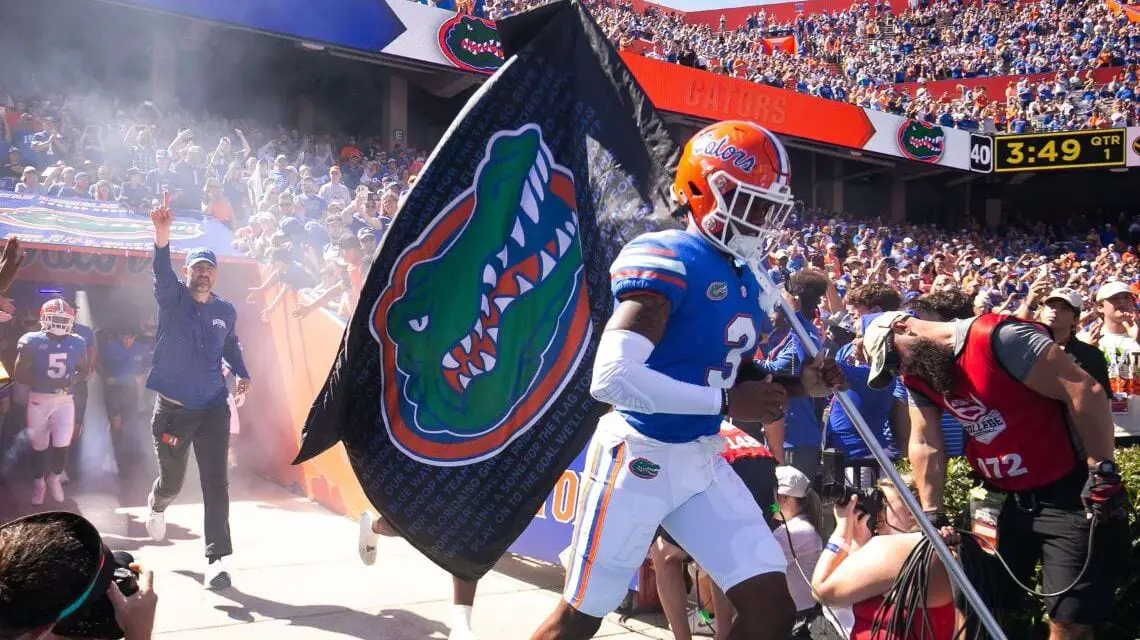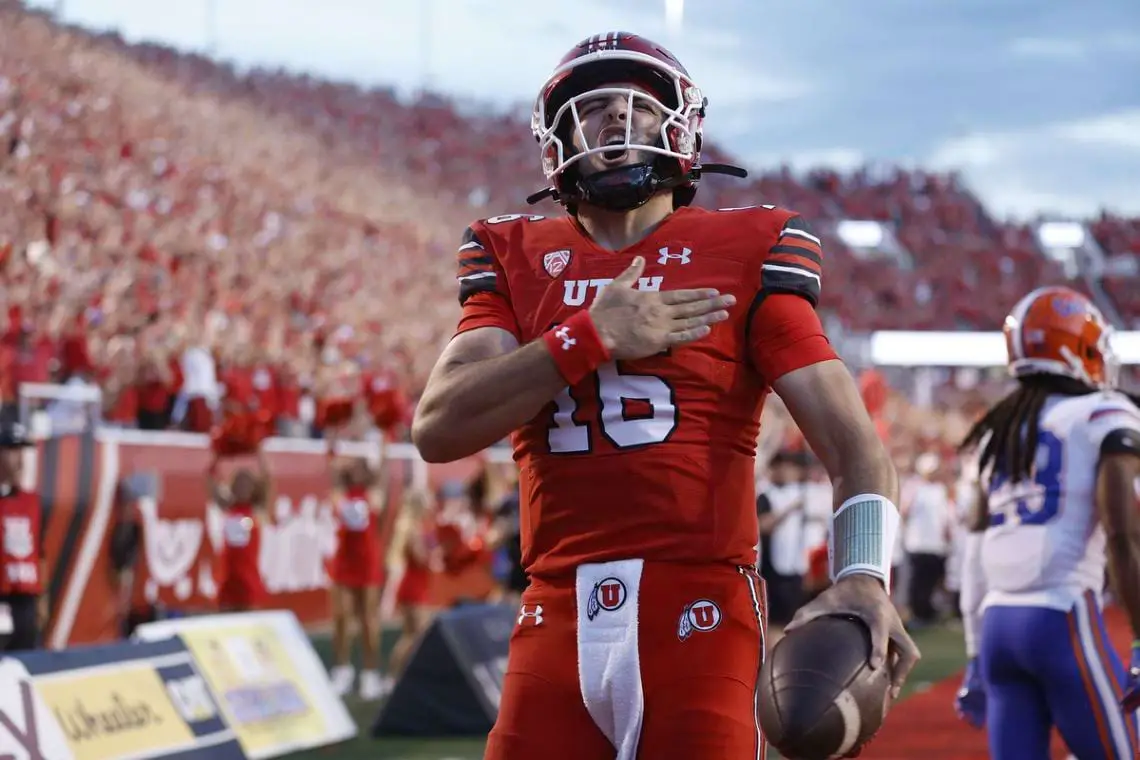
Doug Engle/USA TODAY NETWORK
Football fans are all-too-familiar with the basics when it comes to penalties.
Holding, pass interference, unnecessary roughness — they’re all bound to make an appearance in a typical gridiron matchup.
But “equipment violation” isn’t a penalty that fans come across very often. In fact, Thursday night’s University of Florida vs. University of Utah game may have been the first time many saw a particular type of equipment violation: duplicate jersey numbers.
Florida’s unexpected penalty
Here’s down it went down.
"Equipment violation on the defense. There were two No. 3s on the field for the Florida team. That penalty is five yards from the previous spot, results in a first down."
This was with Utah punting on 4th-and-3.
Chris Fowler and Kirk Herbstreit explained more. 🏈🎙️ pic.twitter.com/DqSI7UvoFQ
— Awful Announcing (@awfulannouncing) September 1, 2023
The Utah Utes and Florida Gators faced off on Thursday night. During the second quarter, the referee made a sudden call following a 4th-and-3 play for Utah.
Utah had opted to punt the ball, and Florida made a fair catch on the Gators’ 5-yard line. But then, the referee suddenly threw a yellow flag on the field, stopping everyone in their tracks.
Players, fans and commentators were perplexed. No obvious penalty had occurred, and it didn’t seem like anything was amiss on the field.
However, an eagle-eyed official had spotted an equipment violation. Wide receiver Eugene Wilson III and cornerback Jason Marshall Jr. were both sporting jerseys with the number 3 at the same time.
It seems as though Marshall was supposed to be wearing the number 33 instead, but didn’t change into the correct uniform for the game.
What is an equipment violation in football?
An equipment violation in football is a violation of the rules related to the equipment that the players on the field are wearing.
In Florida’s case, this involved two players on the same team wearing the same jersey number on the field at the same time. That’s not permitted since it can create confusion for the officials.
Two teammates wearing the same number is just one example of an equipment violation. It also happens to be an incredibly rare one. The National Collegiate Athletic Association (NCAA) does allow teams to have shared jersey numbers, but they’ve passed a rule to limit the number of players who wear the same number.
In addition to only two players per team being allowed to share a jersey number, they must also play different positions. And as the Florida gaffe shows, they’re definitely not allowed on the field at the same time.
Besides the duplicate jersey numbers, there are a number of other scenarios involving what players wear on the field which could potentially result in a penalty. Other examples of equipment violations in football includes wearing illegal equipment or lacking mandatory equipment.
Use of illegal equipment
Players can’t wear any type of equipment not officially permitted by the game rules.
For example, a player can’t wear a detachable kicking toe or an uncovered hard object like a cast. Adhesive and slippery substances are not permitted either. Most of the items which fall into this category are banned because they could either increase the risk of injury to other players or give a player an unfair advantage on the field.
Not using mandatory equipment
During a game, players must be wearing all the mandatory pieces of equipment required for playing when they’re on the gridiron.
For example, all players must have a helmet, pads, uniform and shoes on while they play.
What is the penalty for an equipment violation?
The penalty for an equipment violation in football varies by league and the severity of the infraction.
In the NFL, players can be removed from the game for certain equipment violations. In the NCAA, more serious equipment violations can result in a 15-yard penalty and suspension from the game.
When equipment violations are accidental or pose no threat to other players, as in the case of Florida’s duplicate jersey numbers, penalties are typically less severe. In high school, a player may be given the opportunity to correct the violation. In the NCAA, the offending team might receive a 5-yard penalty.
The fallout for Florida

Jeff Swinger/USA TODAY Sports
As a result of the equipment violation call, Florida received a 5-yard penalty from the previous spot. Utah also received an automatic first down.
Unfortunately for Florida, the penalty for an equipment violation put their team at a major disadvantage during a critical moment of the game. The Gators had already been struggling, and the penalty certainly didn’t help things.
Utah retained possession after they received that first down, and they eventually drove the ball down the field for their second touchdown of the first half.
When the equipment violation occurred, Florida trailed Utah 7-3. Utah scored shortly after the penalty was given, and they ultimately went on to beat the Gators 24-11.